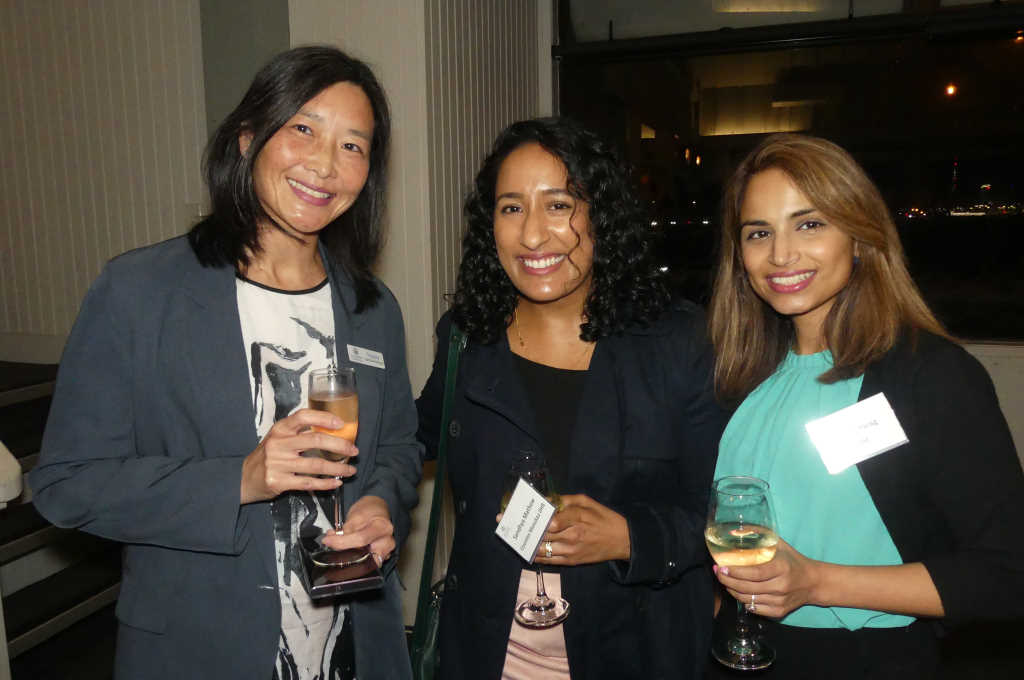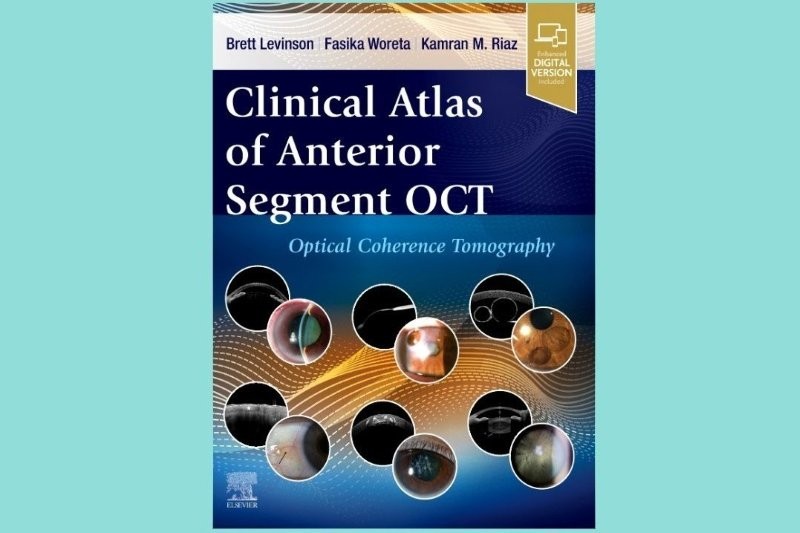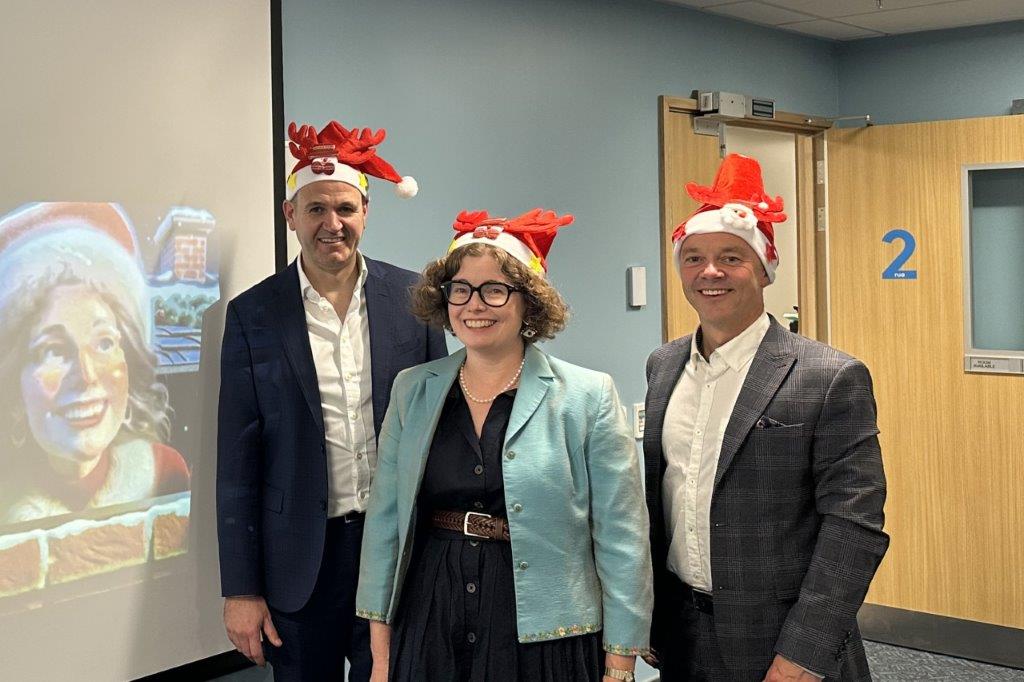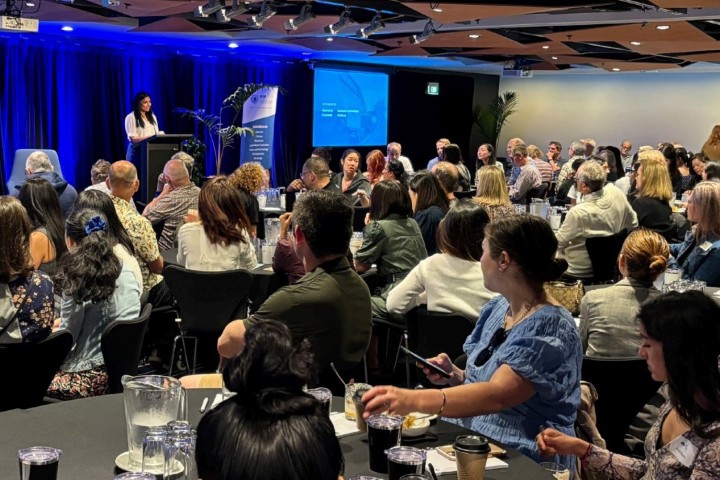Eye Surgery Associates evening: CPD with humour and a touch of horror too!
With last-minute apologies from the night’s guest speaker, Tauranga-based paediatric and strabismus specialist Dr Cheefoong Chong, and Eye Surgery Associates’ (ESA’s) medical retina and vitreoretinal (VR) surgeon Dr Monika Pradhan presenting on Zoom, ESA’s winter seminar was an example of the new normal for in-person gatherings. However, the pleasure of being able to attend a dinner seminar, converse with colleagues and gain some much-needed CPD resulted in a healthy turnout at Auckland’s Tamaki Yacht Club.
Hosting the evening, Dr Hussain Patel delivered Drs Chong and Pradhan’s apologies and introduced his ESA colleagues who were there, noting that Dr Yi Wei Goh was bravely attending while sporting an unspecified foot injury. “The good news is, I’m fine!” he laughed, setting the tone for what was to be a very upbeat evening.

ESA practice manager Rosie Rear, Dr Hussain Patel and Frank Snell
Developmental abnormalities and the VR surgeon
First up, with surprisingly few technical difficulties, Dr Pradhan discussed developmental anomalies and how a VR surgeon might become involved. Optic disc pits (ODPs) are a quite rare congenital anomaly, affecting about 1% of the population. For most, these don’t cause a problem but some people can develop ODP maculopathy (ODP-M), she said. This can occur at any age, from unknown triggers and is characterised by submacular fluid or macular schisis. Using case examples, Dr Pradhan showed how some patients, if their visual acuity is good, only need monitoring as the condition can resolve itself. For others, the treatment of choice is pars plana vitrectomy, including posterior vitreous detachment (PVD) induction with or without intravitreal gas injection.
Another rare congenital defect, also stemming from the incomplete closure of the embryonic proximal optic fissure, is optic disc coloboma, which can affect the iris, lens, choroid, retina and the optic nerve. This can cause asymptomatic visual field defects, amblyopia, nystagmus, photophobia, cosmetic iris issues and retinal detachment, and makes cataract surgery challenging. VR surgeons can also be called on for retinal detachments stemming from retinopathy of prematurity, other inherited disorders such as Stickler syndrome, or infection, tumours, trauma and myopia, said Dr Pradhan.
Eye tattoos: what could possibly go wrong?
Dr Goh then wowed the audience (partly in a horror movie sort of way) with her presentation on eye tattoos: when they are good and when they are really, really bad.
Keratopigmentation or corneal tattooing is a procedure used to improve the cosmetic appearance of corneal scars and leukomas (scarring, clouding of the cornea), and visual symptoms associated with iris abnormalities. It is also used occasionally to improve visual function, for example to reduce glare in cases of albinism, aniridia, coloboma and iridodialysis. Scleral tattoos, on the other hand, serve no positive purpose and involve injecting the same dyes used for skin tattooing under the bulbar conjunctiva, and are carried out by people with no medical training. Fortunately, it’s not allowed in New Zealand. Sharing a series of cases where things had gone very wrong, she discussed treatment choices and outcomes (mostly positive) before ending her talk with the potential perils of coloured contact lenses and, that latest fashion back-step, cosmetic iris implants.

Bruce Nicholls and Jeremy Wong
Myopic maculopathy
The newest member of ESA’s surgical team, Dr Tracey Wong, a medical retina and electrophysiology specialist, discussed myopic macular neovascularisation diagnosis and treatment, noting in her introduction how hard it was to follow a presentation which included bright purple and green-oozing eyeballs!
With the prevalence of myopia increasing globally, and high myopia (≤-5D) predicted to affect 9.8% of the global population by 2050, especially younger adults in urbanised East and Southeast Asian countries, pathologic myopia is of increasing concern. Currently affecting up to 3% of the population (1-3% Asian, 1% Caucasian) pathologic myopia is now defined and classified by the presence of myopic maculopathy, including diffuse or patchy chorioretinal atrophy, lacquer cracks, myopic choroidal neovascularisation (CNV) and CNV-related macular atrophy, said Dr Wong, before sharing a few cases designed to elicit better diagnosis in practice.
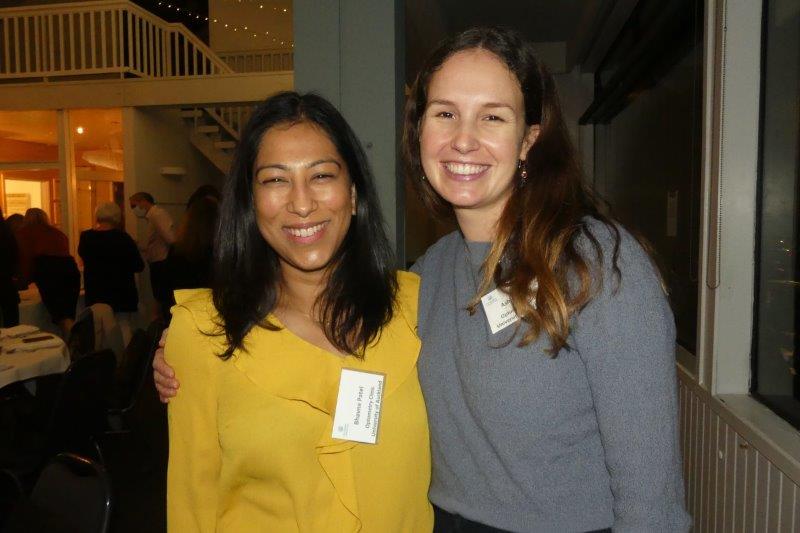
Bhavna Patel and Ashley Gray
The psychological impact of ocular disease and testing the lighter side of optics
Sometimes eyecare professionals (ECPs) can become so tied up with optic discs, OCT scans and treatment and management options for their patients, they can forget about their patient as a person and what a poor diagnosis might mean to them, said Dr Patel. Sharing the WHO’s quality-of-life definition, his presentation could apply to any ocular condition, including dry eye and even difficult refractions, he said, but, given his specialty, he would focus on glaucoma.
Multiple studies describe the increased prevalence of anxiety and depression in glaucoma patients. For example, one showed that 34% of patients had a moderate to severe psychological fear of blindness when diagnosed. Dr Patel then discussed factors which increase stress at diagnosis, such as a lack of understanding about the disease and its treatment options, and how that can be mitigated and then managed by the ECP*. This is important as it can also improve treatment adherence and outcomes, he said.
Replacing Dr Chong’s talk and bringing the evening to a close, the ESA team had devised an amusing and lateral-thinking optics quiz. Who knew you could make so many five-letter words from the word ‘ophthalmologist’?
*Dr Hussain Patel will be tackling this subject in more detail in an article for NZ Optics later this year.










